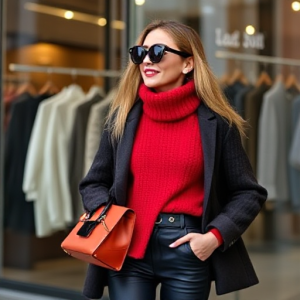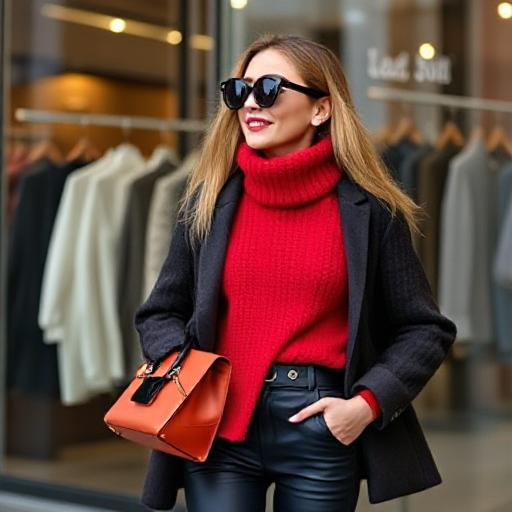
Dropshipping in the fashion industry has become an appealing business model for many entrepreneurs looking to enter the world of e-commerce with minimal upfront investment. It allows sellers to market and sell fashion items without having to worry about inventory or fulfillment, as these are managed by third-party suppliers. However, while it seems like an easy way to get started, there are many factors to consider for long-term success in the competitive world of fashion dropshipping.
Here’s a detailed guide on the best fashion dropshipping tips to help you set up and run a successful dropshipping business.
1. Choose a Profitable Niche
The fashion industry is vast, so focusing on a specific niche can help you stand out from the competition. Here are a few ideas to consider:
- Streetwear: High-demand, trendy clothing aimed at younger, fashion-conscious customers.
- Plus-size fashion: Offering inclusive clothing options for a growing market.
- Eco-friendly fashion: Sustainable and ethical fashion products appeal to conscious buyers.
- Activewear: With fitness becoming a global trend, activewear is in high demand.
- Luxury fashion: High-end items can offer higher profit margins, though they come with more significant upfront costs in marketing and targeting.
Focusing on a specific niche allows you to tailor your marketing efforts and build a dedicated customer base.
2. Select Reliable Suppliers
Choosing the right suppliers is one of the most critical decisions you’ll make in fashion dropshipping. The success of your business will heavily depend on the reliability, quality, and efficiency of your suppliers. Here are a few tips:
- Quality control: Always test the products for quality. Order samples of clothing items to check their materials, sizing, and overall quality.
- Shipping times: Fashion buyers expect fast shipping, so partnering with suppliers that offer quick delivery is essential.
- Return policies: Check that suppliers have clear and customer-friendly return policies, as fashion items often require returns due to size or style issues.
- Product variety: Work with suppliers who offer a wide range of styles to keep your store diverse and cater to different tastes.
Platforms like AliExpress, SaleHoo, Oberlo, and Modalyst are popular for fashion dropshipping, as they connect entrepreneurs with suppliers that meet various needs.
3. Understand Your Target Audience
Knowing your audience is crucial for creating effective marketing campaigns. Fashion buyers are often driven by trends, individual style, and influencers, so identifying and understanding these motivations is essential.
- Market research: Dive into social media, fashion blogs, and trend reports to understand what your target market is interested in. Use tools like Google Trends and Instagram’s Explore page to keep up with trends.
- Customer persona: Create a detailed customer persona, including age, gender, income level, style preferences, and online behavior. This will help you create more relevant ads, products, and content.
- Psychographics: Fashion is often driven by emotions and self-expression. Try to connect with your audience on a deeper level by understanding their lifestyle, aspirations, and values.
4. Build a User-Friendly, Attractive Website
Your website is the face of your fashion dropshipping business, and it’s vital to make it look professional and appealing. A well-designed, easy-to-navigate site can drive conversions, while a poorly designed one can deter potential customers.
- Clean design: Focus on simple, minimalistic design elements that highlight your products and brand identity.
- High-quality images: Since customers can’t physically touch or try on the clothes, clear, high-quality images from different angles are a must.
- Mobile optimization: Many shoppers browse and shop from their mobile devices, so ensure your website is fully optimized for mobile use.
- Fast load times: Slow-loading websites lead to high bounce rates. Keep your site’s speed in check to ensure a smooth shopping experience.
- Secure payment gateways: Use reliable payment processors like PayPal, Stripe, and credit card payments for secure transactions.
5. Optimize for SEO
Search engine optimization (SEO) is essential to drive organic traffic to your online store. By optimizing your product pages, blogs, and overall website structure, you can increase visibility and rank higher in search engine results pages (SERPs).
- Keyword research: Use tools like Google Keyword Planner and Ahrefs to find high-traffic keywords related to fashion. Incorporate these keywords into product titles, descriptions, and blog posts.
- Content marketing: Start a fashion blog to discuss trends, style guides, and fashion tips. This will help drive traffic and build trust with your audience.
- On-page SEO: Ensure your website’s metadata (title tags, alt text, etc.) is optimized, and your pages load quickly.
6. Use Social Media to Your Advantage
Social media is one of the most effective ways to promote fashion dropshipping products. Platforms like Instagram, TikTok, and Pinterest are heavily visual, making them perfect for showcasing fashion products.
- Instagram: Post high-quality photos of your products, collaborate with influencers, and use Stories and shopping features to engage customers.
- TikTok: Leverage TikTok’s viral potential by creating engaging content such as styling tips, fashion challenges, or unboxing videos.
- Pinterest: Use Pinterest to share style boards, fashion inspirations, and “how-to” guides that link directly to your products.
- Facebook Ads: Target specific demographics on Facebook and Instagram to increase reach and sales.
7. Leverage Influencer Marketing
Influencer marketing can skyrocket your sales if done right. Fashion influencers have a massive impact on purchasing decisions, especially among younger audiences. Here’s how to leverage influencers effectively:
- Find the right influencers: Look for influencers whose followers match your target demographic. They don’t necessarily need to have millions of followers; micro-influencers with a smaller but highly engaged audience can be more effective.
- Product gifting or affiliate marketing: Send influencers your products for free in exchange for a post or offer them a commission for every sale made through their referral link.
- Collaborations: Consider doing paid partnerships where influencers create exclusive content or launch limited-edition collections with your store.
8. Offer Excellent Customer Service
Fashion shoppers expect a great experience from browsing to purchasing and even post-purchase. Offering top-tier customer service is vital to building loyalty and gaining repeat customers.
- Quick response time: Respond to customer inquiries promptly, whether it’s via email, live chat, or social media.
- Easy returns: Make returns simple and hassle-free. Clear policies that prioritize customer satisfaction will build trust.
- Personalized experiences: Use customer data to offer tailored recommendations and exclusive deals. Personalized emails and retargeting ads can also increase conversions.
9. Track Metrics and Adjust Strategies
To ensure the success of your fashion dropshipping business, it’s important to track key metrics and adjust your strategies based on performance data.
- Conversion rate: Keep track of how many visitors are turning into buyers. If your conversion rate is low, consider optimizing your website’s design, product descriptions, or checkout process.
- Customer lifetime value (CLV): Measure the total value a customer brings to your business over their lifetime to identify profitable customer segments.
- Ad performance: Monitor the performance of your social media and paid ads. If a campaign isn’t bringing in sales, tweak the targeting or creative.
10. Stay Updated on Fashion Trends
Fashion is always changing, so staying updated on the latest trends is essential. Follow fashion magazines, attend virtual fashion shows, and use trend forecasting tools to keep your product offerings fresh and aligned with what customers want.
Fashion dropshipping offers a low-barrier entry into the world of e-commerce, but success requires thoughtful planning, strategic marketing, and consistent effort. By choosing the right niche, suppliers, and marketing channels, you can build a strong, sustainable business. Remember, fashion is about personal expression and trends, so always stay ahead of the curve and deliver value to your customers.
